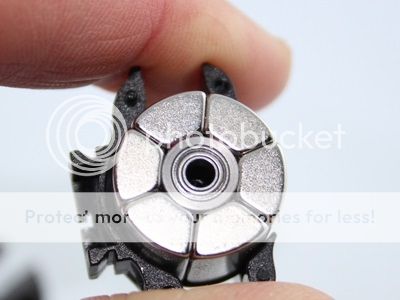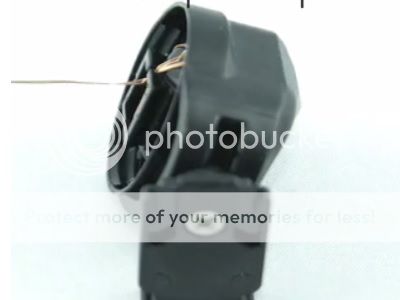So, after some initial thinking here is my idea of a really powerful light based on the principle.
First take a look at this
pretty little motor here :
It has some very interesting features which I believe make it an ideal candidate for a generator.
The plan is to attach it next to the braking disk with some additional magnets over the top larger holes, (those 8 holes in the picture), in order to make it turn using the eddy current principle. The magnets will fit in the holes with some steel ring on their back to close the magnetic circuit and isolate it from the coils inside.
Lets see some of it's features.
KV(RPM/V): 70
What does this mean? Obviously it produces 1V for 70 rpm. Lets do some math on that.
DD=
Disk Diameter at the coupling point=
140mm
MD = Motor Diameter at the coupling point=
28mm (estimated from picture based on the given dimensions)
When these two are coupled give us a
GR = Gearing Ratio = 5 (140/28)
I calculated that for a speed of 25 Km/h the wheel turns at about 200 rpm, so for that speed the motor should turn at 1000 rpm. At that speed the motor/generator would provide 1000 (rpm) / 70 (rpm/V) =
14 V
With a proper circuit it should provide enough power to light up a Cree MK-R or any other power led easily.
I am using shimano ice tech rotors. They have a steel insert which interestingly would provide a loop to the magnetic circuit induced to the rotor, amplifying the effect! The generator can be positioned very close to the disk, creating a tiny air gap which would also strengthen the coupling.
This motor is build using the DLRK winding, it has a negligible coging torque. It's very light, only 104 gr and with proper cirquitry it could make batteries obsolete, or it could just extend their capacity for ever!
So what you guys think of it?










